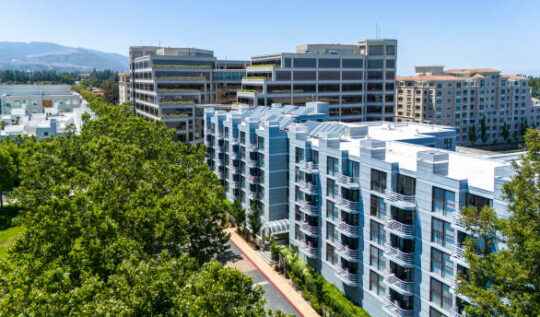SB 35 Eligibility Checklist: A Complete Guide for Developers
Getting permits approved in California can be tough—especially with CEQA, zoning layers, and long agency reviews. But Senate Bill 35 (SB 35) offers a faster path if your project checks the right boxes.
Table of Contents
ToggleThis guide walks you through the SB 35 eligibility checklist—step by step. Whether you’re building multifamily housing in Los Angeles or redeveloping underutilized land elsewhere in California, we’ll help you understand what qualifies, what doesn’t, and how JDJ Consulting Group can help get your project across the finish line—faster.
What Is SB 35 and Why It Matters for Housing Developers
SB 35 is a state law that streamlines the approval process for certain housing developments. If your project qualifies, local governments must approve it ministerially—which means they can’t delay it with subjective reviews or CEQA-level scrutiny.
Is Your Project Eligible for SB 35?
Key Benefits of SB 35 for Developers
No CEQA review (if eligible)
No public hearings for approvals
Faster permitting timeline: 60 to 180 days
By-right entitlement if zoning and affordability match
This law was passed to speed up housing construction in cities and counties that aren’t meeting their RHNA (Regional Housing Needs Assessment) goals. That means SB 35 may only apply in areas falling short on new home development—which includes most of California.
At JDJ Consulting, we use this legislation to help our clients save time, reduce risk, and avoid delays caused by subjective design reviews or CEQA lawsuits. But getting it right means understanding all the details—let’s dive in.
Understanding the SB 35 Streamlining Process
SB 35 doesn’t apply to every housing project. You need to meet several conditions—some are about location, others about zoning, and some deal with affordable housing.

Before we get to the checklist, let’s look at the basics.
What Does “Ministerial Approval” Mean?
If your project qualifies, it skips CEQA and discretionary review. That means:
The local city or county cannot deny your project as long as it meets objective rules
You don’t need public hearings or planning commission approvals
No EIR, Mitigated Negative Declaration, or CEQA notices
JDJ’s Role: We help clients prepare streamlined applications with complete design packages that meet all objective standards, so cities are required to approve them without delay.
Key SB 35 Requirements at a Glance
Here’s a summary table of the most important SB 35 criteria:
| Requirement | What’s Required |
|---|---|
| Project Type | Must be a multifamily residential development (2 or more units) |
| Zoning Consistency | Project must conform to existing zoning and General Plan land use |
| Affordability Requirement | Affordable units required—threshold varies by project size and local conditions |
| Labor Standards | Must pay prevailing wages; larger projects require skilled and trained workforce |
| Eligible Site Location | Urban infill only; site must not be on wetlands, farmland, fire zones, or hazardous areas |
Which Cities Qualify for SB 35 Streamlining?
SB 35 only applies in cities and counties that are not meeting their housing production goals. This includes most of California’s urban areas, including Los Angeles, San Diego, San Jose, and many parts of the Inland Empire.
To find out if your project is in a qualifying area, check the latest HCD determination list or ask our team at JDJ—we check this during every feasibility study we run.
The Complete SB 35 Eligibility Checklist
To qualify for SB 35 streamlining, your project needs to meet several criteria. These aren’t optional—they’re all required. Think of it like a pass/fail system. One misstep, and your project could be disqualified.
Let’s break it down.
Basic Project Requirements
Multifamily Housing: Your development must have at least 2 residential units. Single-family homes don’t qualify.
Zoning Compliance: The project must match both zoning codes and the General Plan land use designation.
Urban Infill: At least 75% of the project’s perimeter must be surrounded by existing development. No isolated rural sites.
Affordability Requirements (For Larger Projects)
If your project has 10 or more units, you must include affordable housing:
| Project Size | Minimum Affordable Housing Requirement |
|---|---|
| 10+ units | At least 10% very low-income or 50% low-income, depending on jurisdiction rules |
| 1–9 units | No affordability requirement under SB 35 |
Your property must not be located in or near:
Farmland or wetlands
Fire hazard severity zones
Earthquake fault zones
Hazardous waste sites
Floodplains or coastal erosion areas
Historic or tribal cultural resources
If any of these apply, your project will likely be disqualified from SB 35.
Construction Labor Requirements
For larger projects (generally those over 10 units or above 85 feet in height):
Prevailing wage must be paid to all construction workers.
If the project is large enough, it may also require a skilled and trained workforce—certified under state law.
How the SB 35 Application Process Works
Once you know your project qualifies, the next step is submitting your application for SB 35 streamlining. The process is fairly structured, but each city may have small differences—so getting guidance from consultants like JDJ can keep things smooth.
Here’s what the typical SB 35 submission process looks like:
| Step | What Happens |
|---|---|
| Step 1: File Notice of Intent | Submit a formal letter notifying the city that you plan to use SB 35 streamlining |
| Step 2: Tribal Consultation | If required, notify Native American tribes; they have 30 days to respond |
| Step 3: Submit Full Design Package | Submit architectural plans that meet all objective zoning/design standards |
| Step 4: Eligibility Review | The city has 60–90 days to approve or deny based on checklist compliance |
| Step 5: Final Permit Issuance | If approved, you move straight to ministerial permits—no CEQA, no hearings |
What If the City Doesn’t Respond on Time?
If the local agency misses the response deadline (typically 60 or 90 days), SB 35 treats the project as approved by default. That’s powerful leverage—but it only works if your application is complete and legally compliant.
JDJ Tip: We always recommend submitting a Notice of Intent alongside a fully documented plan set. This helps you lock in deadlines and start the clock right away.
Common Mistakes That Disqualify SB 35 Projects (and How to Avoid Them)
SB 35 can save you time and money—but only if you do it right. A small error or misunderstanding can lead to delays, denials, or litigation. These are the issues we see most often when clients come to us mid-process:

Mistake #1: Assuming the City Will Apply SB 35 Automatically
Cities aren’t required to tell you if your project qualifies. It’s your job to affirmatively request SB 35—and submit the correct documentation.
Solution: Work with a consultant like JDJ to prepare a legally sound submission, including all required notices and standards checklists.
Mistake #2: Missing Objective Design Standards
Even if your project qualifies for SB 35, you still have to meet objective building, height, setback, and design rules. If your design doesn’t comply, the city can deny the project—without CEQA.
Solution: JDJ can help review your design early in the process to ensure full alignment with local codes.
Mistake #3: Submitting an Incomplete Application
If your plans are missing key documents—like affordability covenants, tribal notices, or design compliance statements—your application won’t trigger SB 35 timelines.
Solution: Our team builds complete SB 35 packages that avoid common errors and force cities to respond under state-mandated deadlines.
6. SB 35 vs Other Streamlining Laws: What Makes It Unique
California offers several streamlining tools for housing development—but SB 35 is different. It provides stronger protections and clearer timelines, especially for developers who meet zoning and affordability standards.
Below is a comparison of SB 35 with other major streamlining tools:
| Streamlining Tool | Applies To | CEQA Exempt? | Public Hearings? | Key Limitation |
|---|---|---|---|---|
| SB 35 | Qualifying multifamily projects | Yes | No | Strict site & design standards |
| SB 330 | Most housing in CA | No | Yes | Only limits downzoning and delays |
| AB 2011 / SB 6 | Office-to-housing conversions | Yes | No | Requires affordability & labor standards |
| SB 375 | Transit-priority areas | CEQA streamlined | Yes (some) | Only applies in designated urban corridors |
| CEQA Exemptions | Certain infill, small projects | Yes | Varies | Often needs legal interpretation |
Why Developers Choose SB 35 First
CEQA exemption is automatic—if eligibility is met
Timelines are guaranteed (60 or 90 days depending on unit count)
No subjective review—the project is reviewed based only on objective standards
By-right approval means no public hearings or appeals
Strong legal backing under state housing law enforcement
At JDJ Consulting Group, we help clients compare all available options. In many cases, SB 35 is the fastest path to approval—especially for infill and affordable housing projects in cities like Los Angeles, Long Beach, Glendale, and Inglewood.
How JDJ Consulting Group Helps Developers Use SB 35
Navigating SB 35 requires more than filling out a checklist. It involves legal strategy, local code compliance, design reviews, and coordination with multiple agencies. At JDJ Consulting, we guide clients through the full SB 35 process—from early feasibility to permit issuance.
Here’s how we support you:
Site Analysis & Feasibility Review
Determine if your project qualifies based on location, zoning, and HCD eligibility
Flag environmental or site-based disqualifiers early
Pre-Application Strategy
Prepare and submit the Notice of Intent
Coordinate tribal consultation if required
Review General Plan and zoning compliance
Objective Standards & Plan Check
Audit all architectural and site plans for objective compliance
Adjust setbacks, height limits, floor area ratio, and open space requirements based on local codes
Manage city planning responses and document updates
Affordable Housing Structuring
Advise on inclusionary housing strategy
Draft and record affordability covenants to meet SB 35 terms
Coordinate with housing departments to validate unit mix and income tiers
Labor Compliance & Workforce Documentation
Help your project meet prevailing wage and skilled/trained workforce rules
Liaise with labor attorneys and contractors to ensure state compliance
Permit Support & Tracking
Submit final design package with all documentation
Monitor 60/90-day approval timelines
Handle modifications, extensions, and updates under AB 831 and AB 1174
When your project is on a tight deadline, having our team at JDJ ensures the process runs on track—without costly mistakes or delays.
SB 35 Site Requirements – Quick Filter
Filter your site’s eligibility based on basic requirements:
Case Study: Streamlining a Mixed-Use Development with SB 35 in Los Angeles
Let’s look at a real-world example where JDJ used SB 35 to accelerate a client’s multifamily development.
Project Overview
Location: South Los Angeles, near Expo Line
Project Type: Mixed-use building with 22 residential units and 2 ground-floor retail spaces
Zoning: C2-1VL (Commercial, but allows housing by-right)
Affordability Mix: 6 very low-income units (27%)
Timeline: 91 days from submission to full approval
Labor: Prevailing wage met through general contractor partnership
Challenges We Solved
The site bordered a historical overlay district. JDJ coordinated an objective design compliance memo to prevent disqualification.
The first plan set missed minor setback details. We revised the design within 3 days and avoided triggering delays.
The city questioned affordability covenant structure. Our housing compliance team provided precedent examples from other SB 35 approvals and resolved the issue quickly.
Results
CEQA exemption granted automatically
No planning commission review
Full building permit ready within 14 weeks
Cost savings of over $85,000 in environmental and legal fees
This is just one example of how JDJ helps clients take advantage of streamlining laws like SB 35—while avoiding the pitfalls that derail other projects.
What Types of Housing Projects Qualify Under SB 35?
Understanding which development proposals qualify under SB 35 is key to saving time and money. Not every residential project is eligible—even if it’s multifamily or meets local zoning requirements.
Qualifying Projects Must Be Residential or Mixed-Use
SB 35 applies primarily to multifamily residential projects, including:
Apartment buildings
Condominiums
Townhome complexes
Mixed-use buildings where at least two-thirds of the floor area is residential
Note: Single-family homes and projects with a majority of commercial square footage do not qualify.
Projects Must Be in Urban Infill Areas
To be eligible, your site must meet urban infill criteria. This means:
At least 75% of the site’s perimeter must be adjacent to urban uses (housing, businesses, roads)
The site is located within city limits or an urbanized unincorporated area
It’s not on farmland, open space, or environmentally protected land
Zoning Compliance Is Mandatory
One of the most critical checks: Does your proposal align with the city’s zoning map and General Plan? If your project:
Exceeds height or density limits
Requires a zone change or plan amendment
Then it’s not eligible for SB 35 streamlining.
JDJ Consulting can help verify zoning conformance early in the process to avoid costly delays.
Labor Standards and Workforce Requirements
Even if your project checks every other box, SB 35 will not apply unless you meet strict labor requirements—especially for larger developments.
Projects of 10+ Units Must Pay Prevailing Wages
If your project involves 10 or more units, California law requires:
Prevailing wage rates for construction workers
Certified payroll documentation
Compliance with California’s Department of Industrial Relations
Projects of 50+ Units Must Use Skilled & Trained Workforce
Larger projects (50+ units) have additional obligations. In addition to prevailing wage, you must:
Use a skilled and trained workforce, including workers enrolled in state-approved apprenticeship programs
Hire crews with verified hours in applicable trades
Submit proof of compliance as part of your project approval
These workforce rules ensure labor quality, but they can also increase costs. JDJ Consulting can connect you with labor compliance experts to help keep your project eligible.
What Are the Affordable Housing Requirements Under SB 35?
Not all cities have the same affordability requirements under SB 35. The rules vary depending on how well a city or county is meeting its housing goals under California’s Regional Housing Needs Allocation (RHNA) targets.
SB 35 Uses Two Housing Compliance Categories:
Cities and counties fall into one of two buckets:
Category 1: Underperforming jurisdictions
These localities have not met their lower-income housing targets and face stricter affordability rules.Category 2: Partially compliant jurisdictions
These have made moderate progress and have slightly looser affordability rules.
The chart below shows how many affordable units your project must include depending on your location and unit count.
SB 35 Affordable Housing Threshold Table
| RHNA Compliance Status | Project Size (Units) | Required % of Affordable Units | Affordability Level |
|---|---|---|---|
| Jurisdiction has NOT met low-income RHNA targets | 10+ units | 50% | Low income (≤80% AMI) |
| Jurisdiction has met low-income but NOT moderate RHNA targets | 10+ units | 10% | Moderate income (≤120% AMI) |
| Project has less than 10 units | Any status | No affordable requirement | N/A |
Pro Tip: You can check a city’s RHNA progress through the California Housing Dashboard.
JDJ Tip for Developers
It’s not just about including affordable units—it’s about how they’re managed. SB 35 requires:
Units to be deed-restricted for 55 years (rental) or 45 years (ownership)
Inclusionary units to be distributed proportionally throughout the project
No discrimination in design, access, or amenities between market-rate and affordable units
JDJ Consulting helps clients learn about these requirements while still preserving project financials.
Environmental Review and Exemptions: What SB 35 Means for CEQA
One of the biggest advantages of SB 35 is that it streamlines the approval process by skipping CEQA review — under specific conditions.

When Does SB 35 Exempt You from CEQA?
If your project qualifies for SB 35 ministerial approval, it’s not subject to CEQA. That means:
No Negative Declaration
No Mitigated Negative Declaration
No public comment period or environmental appeals
This saves developers time, money, and legal risk.
But there’s a catch — you must meet all location-based exclusions and site criteria.
Sites Ineligible for SB 35 Streamlining (and CEQA Exemption)
Your development is not eligible for SB 35 ministerial approval if it’s located in any of the following:
Prime farmland or land under Williamson Act contract
Wetlands or flood hazard areas (unless mitigated by FEMA)
Very high fire severity zones (unless cleared by local agency)
Hazardous waste sites (unless certified clean)
Earthquake fault zones (unless building complies with special state regulations)
Historic districts or landmarks (unless exemption is cleared under CEQA)
Projects that don’t meet these location tests may still proceed — but they won’t get CEQA streamlining under SB 35.
JDJ Strategy Insight
We advise our clients to conduct a Site Eligibility Scan early in the feasibility phase. JDJ Consulting reviews parcel data, General Plan overlays, and environmental layers to identify red flags. This prevents wasted time on sites that look good on paper but won’t qualify in practice.
Labor Standards: Do SB 35 Projects Require Prevailing Wages or Union Labor?
SB 35 doesn’t just fast-track housing approvals — it also sets strict labor compliance standards, especially for larger projects. Before you assume your project is eligible, it’s crucial to understand what kind of workforce you’re required to use.
Which Labor Rules Apply Under SB 35?
The labor requirements depend mainly on the number of units and whether the developer is a public entity or private applicant.
Here’s a breakdown:
| Project Type | Labor Requirement |
|---|---|
| 10 units or fewer (non-subsidized) | No specific labor requirement |
| 11+ units or publicly funded construction | Must pay prevailing wages under Labor Code §1720 |
| Over 50 units | Must also use a skilled and trained workforce (union-equivalent training) |
| Governmental agency as developer | Full compliance with Public Contract Code labor mandates |
What Is a Skilled and Trained Workforce?
A skilled and trained workforce means your contractors must use tradespeople who have graduated from state-approved apprenticeship programs — or be enrolled in them.
Key trades include:
Carpenters
Electricians
Ironworkers
Plumbers
This requirement can significantly affect your project costs and timeline, especially if your GC is not already aligned with union labor standards.
JDJ Strategy Insight
We help our clients prepare for SB 35 labor compliance early by:
Vetting general contractors with verified labor compliance history
Reviewing bid documents for prevailing wage clauses
Flagging labor-intensive trades subject to training rules
This minimizes risk of delays, stop-work orders, or project denial due to workforce violations.
Understanding Objective Standards: Why Design Guidelines Still Matter Under SB 35
One of the most misunderstood parts of SB 35 is the role of design review. Many assume the law eliminates all local control — but that’s not quite true. While SB 35 streamlines the entitlement process, it still allows cities to enforce objective development standards.
What Are Objective Standards?
Objective standards are measurable, rule-based criteria — not open to interpretation.
They include things like:
Building height limits (e.g., 45 feet max)
Setbacks (e.g., 5 feet from property line)
Floor-area ratio (FAR)
Parking ratios
Façade materials if listed with specific definitions (not just “aesthetic compatibility”)
Local governments can reject or condition SB 35 projects only if the project fails to meet objective standards on the books when the application is submitted.
Can Cities Deny a Project Based on Design?
No — if the project meets all objective criteria, subjective design review is not allowed. That means:
No hearings
No planning commission vote
No appeals based on “neighborhood character”
But here’s the catch: some cities try to stretch the definition of “objective.” That’s where careful entitlement strategy comes in.
How JDJ Helps Navigate Objective Criteria
At JDJ Consulting Group, we help developers:
Analyze every objective zoning, design, and development standard upfront
Identify potential conflicts or outdated local codes
Negotiate clarity with planning staff before formal application
This ensures your SB 35 application is bulletproof from Day 1 — reducing delays and costly redesigns.
Understanding Eligible Sites: What Types of Land Qualify for SB 35 Streamlining?
Even if your project meets affordability and zoning requirements, it won’t qualify under SB 35 unless the site itself is eligible. That’s why location analysis is a core part of every SB 35 feasibility study.
SB 35 Site Eligibility Checklist
Use the table below to quickly identify if your site qualifies:
| Site Condition | SB 35 Eligibility |
|---|---|
| Located in an urbanized area | Required |
| Not in wetlands or fire zones | Required |
| Not on prime farmland or open space | Required |
| No recent tenant displacement | Required |
| Not subject to historic preservation | Required |
| Has access to urban infrastructure | Required |
If your site checks all these boxes — and your project meets the earlier eligibility standards — you may qualify for streamlined ministerial approval under SB 35.
Final Thoughts: Use SB 35 as a Strategic Tool — Not a Shortcut
SB 35 isn’t a magic wand, but it’s one of the most powerful tools in California housing law. Used properly, it can:
Cut project timelines from 2+ years to a few months
Eliminate discretionary hearings and local opposition
Provide a clear path to entitlements — especially for affordable and mixed-income housing
But the key is early-stage feasibility analysis. One misstep — like misreading zoning or skipping a labor requirement — can derail your project.
Ready to See If Your Project Qualifies for SB 35?
At JDJ Consulting Group, we help real estate developers, architects, and housing nonprofits unlock the benefits of SB 35 — without the red tape. Our qualified team conducts in-depth site eligibility reviews, zoning analysis, and strategic entitlement planning tailored to your project.
Whether you’re still in the concept phase or need help fast-tracking a stalled proposal, we’re here to help.
Call us at (818) 233-0750 or contact us online to schedule your free consultation.
SB 35 Streamlined Approval Timeline
Evaluate your property using land use consulting services to confirm General Plan and zoning consistency.
Confirm that your project qualifies for CEQA exemption under SB 35. Review site conditions—avoid wetlands, fault zones, or farmland.
Verify how many units must be affordable based on local RHNA progress. Use HCD’s RHNA data or feasibility analysis support.
Ensure prevailing wage compliance and skilled workforce commitments. Especially important for 10+ unit projects.
Prepare a complete submittal package. JDJ’s permit expediting team can help track approvals and ensure fast turnaround.
FAQs Regarding SB 35 Eligibility Checklist
What is SB 35 and how does it benefit developers in California?
SB 35 is a California state law that streamlines housing project approvals in cities failing to meet their Regional Housing Needs Allocation (RHNA). It offers a ministerial approval process, bypassing CEQA and lengthy discretionary reviews.
Key benefits for developers include:
Faster project approvals without public hearings
No CEQA environmental review
Objective standards only — no subjective design criteria
Ideal for infill and affordable housing projects
Which cities and counties does SB 35 apply to?
SB 35 applies only in jurisdictions that have not met their state-mandated housing production goals. HCD publishes an annual list of these cities and counties.
As of 2025, many high-demand areas such as:
Los Angeles
San Francisco
Oakland
San Diego
Pasadena
…are subject to SB 35 provisions.
You can access the current list of eligible jurisdictions here (HCD link) or contact our team at JDJ Consulting Group in Los Angeles to verify your site’s status.
Can a project qualify for SB 35 if it includes market-rate housing?
Yes, SB 35 allows mixed-income developments, but eligibility depends on the project’s affordable housing percentage and local RHNA compliance status.
To qualify:
In urban areas behind on both above-moderate and lower-income housing → 50% affordability required
In areas behind on lower-income housing only → 10% affordability required
Our experts at JDJ can help calculate the required unit mix for your project.
What site criteria must be met to use SB 35 streamlining?
To qualify, your development site must meet specific conditions under the law. SB 35 does not apply to all parcels in California.
The site must:
Be within an urbanized area or urban cluster
Be zoned for residential or mixed-use
Not be located on prime farmland or hazardous waste sites
Not require demolition of rent-controlled or historic units
How long does the SB 35 approval process typically take?
SB 35 sets strict timelines that local governments must follow.
Review timeline: 60 days (projects <150 units)
Review timeline: 90 days (projects ≥150 units)
No hearings or appeals allowed
Delays can occur if the application isn’t complete. JDJ Consulting ensures you file a fully compliant ministerial application to meet these deadlines.
Can SB 35 be combined with other streamlining tools like AB 2011 or density bonus?
Yes, SB 35 can be used alongside other tools like:
AB 2011 (for commercial corridors and affordable housing)
California Density Bonus Law
SB 330 (Housing Crisis Act)
Combining tools can improve project feasibility, especially for infill developments and underutilized commercial properties.
Compare SB 35 and AB 2011 Eligibility Side-by-Side
| Criteria | SB 35 | AB 2011 |
|---|---|---|
| Eligible Sites | Urban infill, zone-compliant parcels, not in sensitive areas | Commercial corridors (retail, office), minimum widths apply |
| Affordability Requirement | 10–50% affordable depending on jurisdiction’s RHNA status | 100% affordable (unless workforce housing exception applies) |
| Labor Standards | Prevailing wage + apprenticeship for >10 units | Stricter: All projects must use skilled and trained workforce |
| Design Review | Allowed, but must be objective and within 60–90 days | Allowed, but may not block project—must be objective |
| Environmental Review | Exempt from CEQA | Exempt from CEQA |
| Good for Developers Who… |
|
|






Understanding the Green Building Code Los Angeles | JDJ Group
July 21, 2025
[…] processing under SB 35 and AB […]
Affordable Land Use Consulting in Los Angeles | JDJ Consulting
July 28, 2025
[…] SB 35 – Streamlines approval for housing that meets affordability and zoning standards. […]
Guide on Los Angeles Permit Timeline for Multifamily Projects – JDJ Consulting
August 21, 2025
[…] 35 Streamlining – Speeds review for qualifying affordable housing […]